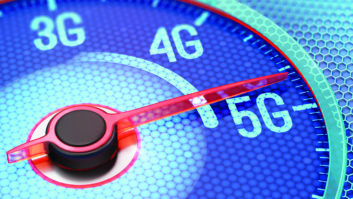Editor’s Note: Welcome to the next edition of Need to Know, in which TWICE and our parent Future plc explain complex topics and how they apply to each industry we serve, on our websites and in our magazines. Keep coming back for future topics, to include cybersecurity, artificial intelligence and more.
While 5G is still an estimated two years out from deployment, its tremendous effect on the consumer electronics industry is already readily accepted. As with previous next-gen wireless technologies, the advancement will continue to roll the wheel of progress forward — this time at exponential speeds.
There are particular implications for the smart home, as CE devices will be able to operate exceptionally more quickly and with less latency. Stephen Baker, NPD Group VP and technology and mobile industry advisor, said at TWICE’s annual Retail Executive Roundtable earlier this year that “5G will do what mesh is doing to home Wi-Fi.”
This will aid smart-home devices in proving their worth to consumers, who will in turn purchase more smart-home devices to build out their personal ecosystems (or so the thinking typically goes).
But what does it mean for the business of selling consumer technology? While that’s a bit murkier, examining past history paints another promising picture.
The nationwide rollout of 5G could level the playing field a bit more between brick-and-mortar and online selling, noted Baker, likely mirroring the change the industry experienced in the upgrade from 3G to LTE.
For one thing — and somewhat paradoxically for tech sellers — the increase in wireless speeds has reduced a consumer’s need to showroom, Baker said. Prior to LTE, extensive online product research was too cumbersome, and so it was just easier to visit a store for research (although, as retailers know, not necessarily to purchase). “The reason you went inside,” Baker said, “was because it would take forever to do it the other way.”
“Going forward, 5G will allow retailers to more aggressively integrate their physical and virtual [online selling] worlds in terms of their merchandising and in-store and online managements. It will become less about being omnichannel and more about being just a retailer.”
LTE has helped put brick-and-mortar on more equal footing with e-commerce, Baker said, by enabling retailers to develop comprehensive, integrated omnichannel experiences and make in-store and online selling work better together in concert, he said.
As these wireless speeds increase, stores will have additional opportunities to integrate even more advanced technologies into their selling environments. The dramatic improvements in wireless speeds means sellers can invest more heavily in their retail and merchandising operations — for example, in-store kiosks, virtual reality displays, and the further integration of augmented reality.
All of these advancements will ultimately enable sellers to seamlessly move the customer from purchasing online to the store, said Baker.
“Going forward, 5G will allow retailers to more aggressively integrate their physical and virtual [online selling] worlds in terms of their merchandising and in-store and online managements,” he said. “It will become less about being omnichannel and more about being just a retailer.”
Consequently, part of the potential impact of 5G on retail includes retailers’ ability to integrate store operations online, including more efficient and cost-effective inventory management, improvements in shelf tags, and the ability to better manage pricing.
“It can add significant value to the physical store as well as to online store,” he noted.
The industry still has some time before it’s able to reap the benefits of 5G within retail — Baker estimated around 2022 to 2023 — but given the pace of change, there’s no telling what its implementation, or even the retail landscape, will resemble at that point. Right now, however, it’s safe to assume that the next generation in wireless transmission will play a transformative role in the tech being sold and the tools that will be used to sell it.
Need to Know More?
Have a burning question about 5G — or maybe request for a different topic you’d like to see us tackle? Email us at [email protected] and we’ll put our top minds on it!
Need to Know 5G: Other Industries:












